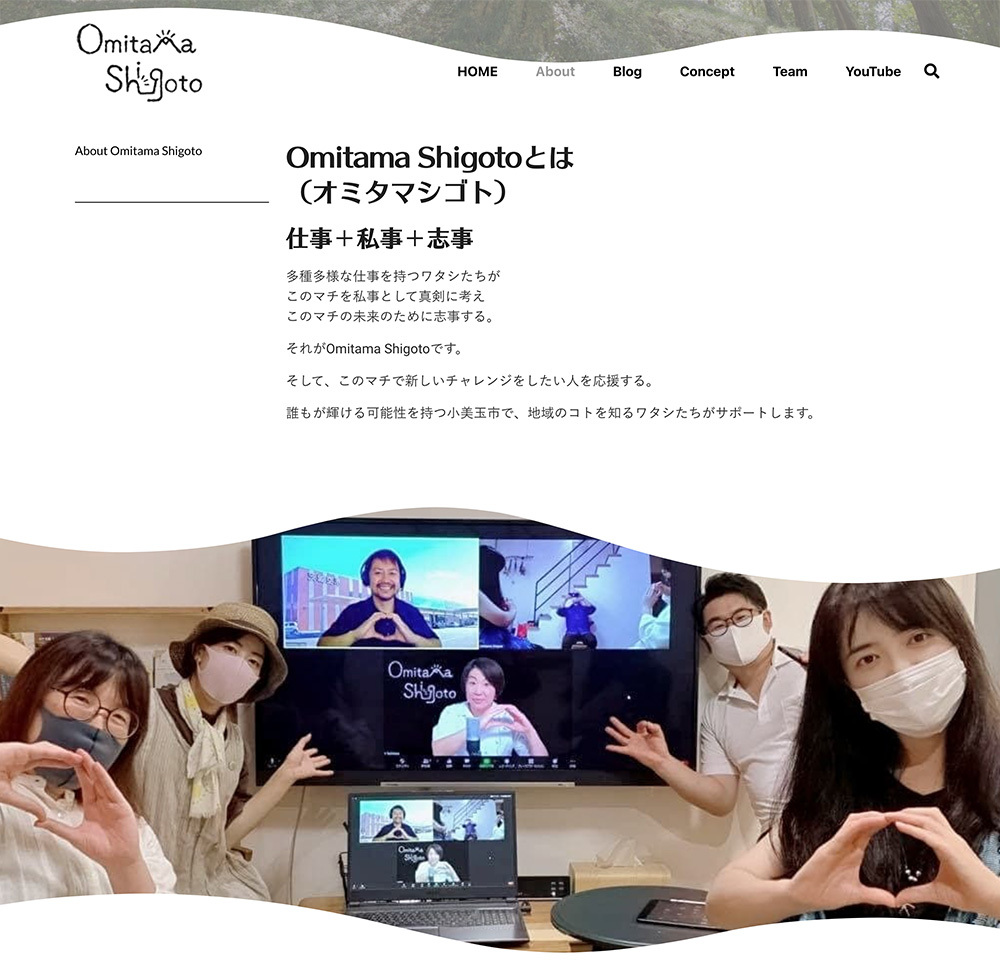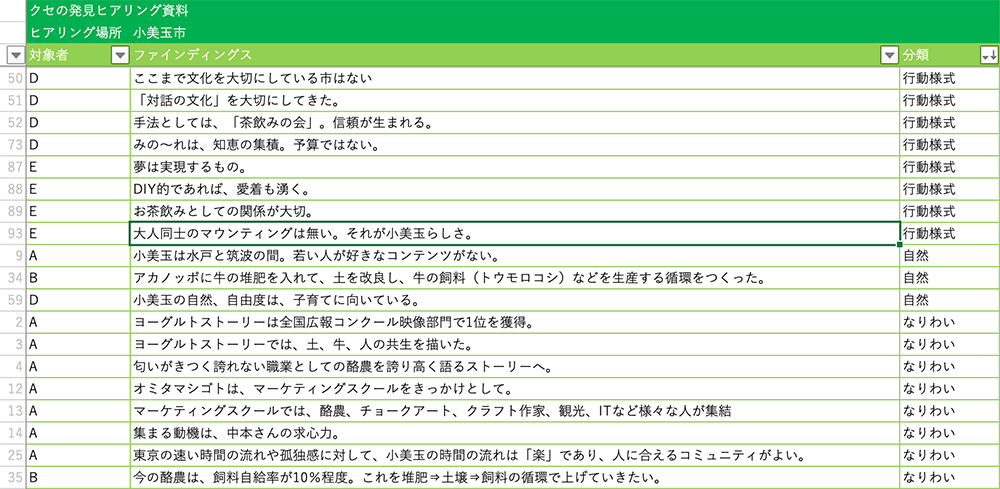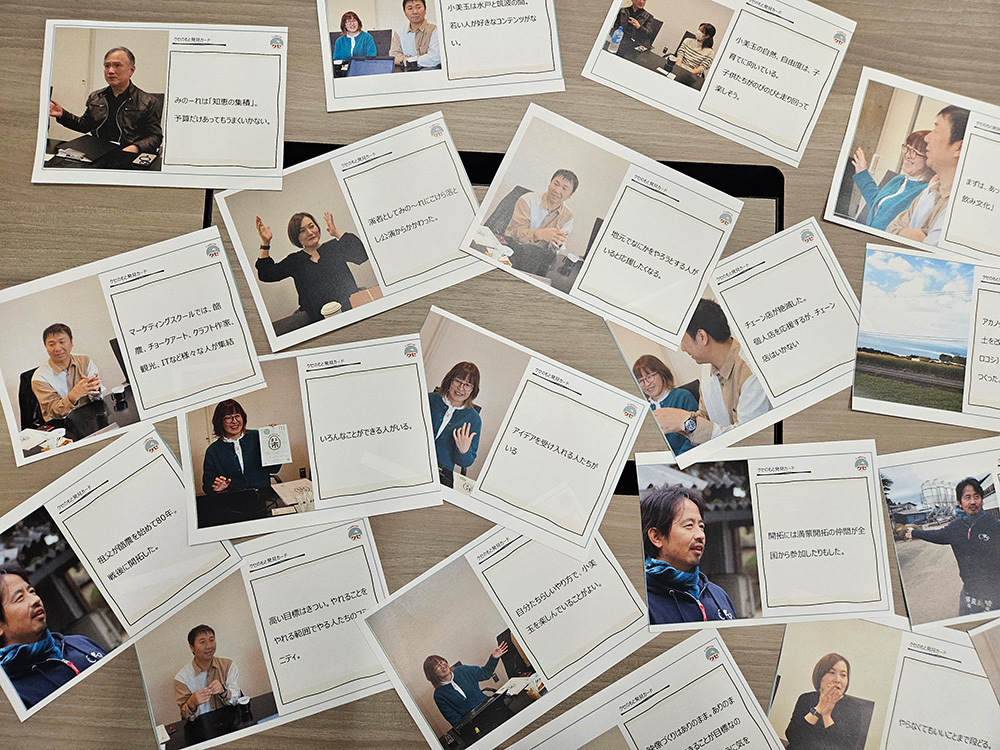This series features three planners from Dentsu Inc., who have been involved in numerous regional revitalization initiatives, proposing the new concept of 'Regional Quirks.'
In Part 1, they discussed the current state and challenges of regional revitalization in Japan. Part 2 introduced case studies of "Regional Quirks" to overcome these challenges and explored the benefits for companies and local governments in utilizing these quirks.
Now, we finally move into the practical phase. To learn how to actually find "regional quirks," we visited Omitama City, Ibaraki Prefecture, and conducted a "Quirk Exploration"! This hands-on project is essential reading for all players involved in town development.
Once again, three "quirky experts" deliver the insights: Toshiaki Morio from 47CLUB Inc., Takuya Kagata from Dentsu Consulting Inc., and Nobu Miyazaki from Dentsu BX Creative Center.
Off to the "Quirk Exploration" site, Omitama City, Ibaraki Prefecture! ...But what kind of place is it?
Kagata: First, a recap of what we've covered so far. To build sustainable local communities, let's focus not just on local industries or tourism resources themselves, but on the underlying "quirks" behind them. Our proposal is to view regions as "quirky economic spheres."
Miyazaki: Our goal is to share methods for discovering these "quirks" in every region across Japan and leverage them for regional revitalization. For the basic concept and case studies, please refer to Parts 1 and 2.
Morio: How do we uncover "regional quirks" that even locals might not consciously recognize? This time, we bring you a report from our actual fieldwork—what we call "Quirk Exploration."
What is "Quirk Exploration"?
1. Interview local people and observe the landscape
2. Create about 100 "Quirk Source Discovery Cards" based on the interviews
3. Discuss while looking at the cards to bring the "quirks" to light
Kagata: So, this time we headed to Omitama City in Ibaraki Prefecture for our "Quirk Exploration." I've served as an advisor there for many years. To give some background, Omitama City has a population of just under 50,000. It was formed in 2006 through the merger of three municipalities: Ogawa Town in Higashiibaraki District, Minosato Town, and Tamari Village in Shinji District.
Morio: The names "Omi" (小), "Miyama" (美), and "Tama" (玉) symbolize its merger history, right? With large-scale Heisei-era mergers, countless towns nationwide were formed by combining multiple municipalities. Even for companies, PMI (Post-Merger Integration) – integrating after a merger and building a shared identity – is a challenge. Omitama is a good example of successful integration, isn't it?
Kagata: Exactly! It's a region thriving in agriculture, livestock, and dairy farming, bordering Lake Kasumigaura, and it also has Ibaraki Airport within the city. It's about an hour and a half drive from Tokyo.
Miyazaki: This time, we actually made a day trip there from Tokyo Station, didn't we?
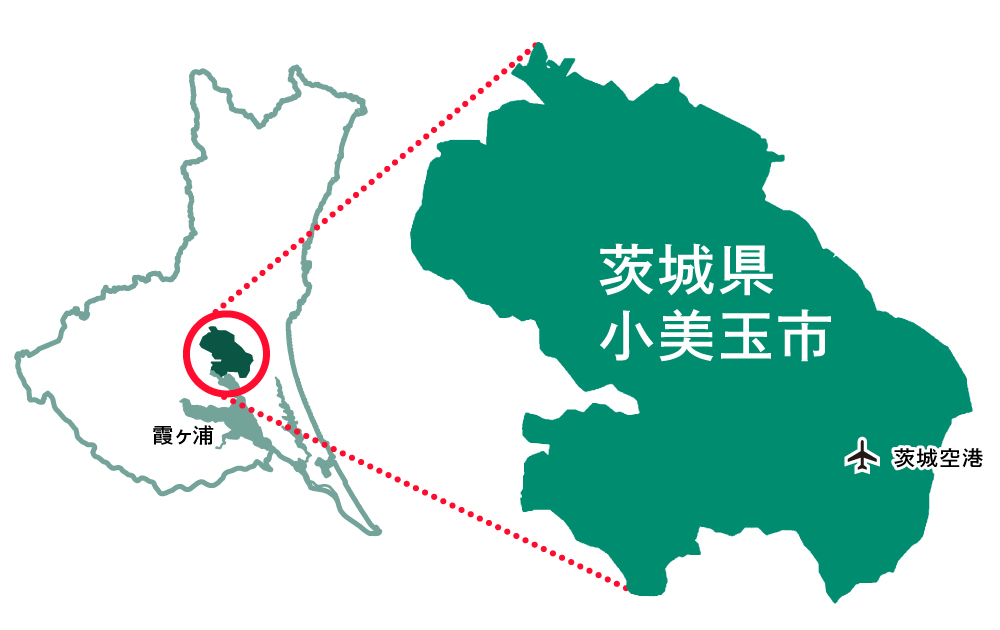
Omitama City, Ibaraki Prefecture, was formed in 2006 through the merger of three municipalities. It's a relatively new local government, but according to Kagata, who has served as an advisor for several years, the residents have a strong sense of identity as "Omitama citizens."
Kagata: And because the current generation of grandparents pioneered the area by clearing forests to start dairy farming and built the town themselves, they're filled with a DIY spirit of "doing everything ourselves." ( See Part 2 of the series )
Morio: For this practical exploration, we chose Omitama City because, while it's not a typical, easily recognizable tourist destination, it's an incredibly charming town. Essentially, we thought focusing on the "mindset of the people who live there" rather than starting with local products or tourist resources would lead to discovering its unique character.
Miyazaki: When it comes to regional revitalization, not every area necessarily has famous industries or tourist attractions. But conversely, precisely because it's that kind of town, focusing on its quirks offers the potential to rediscover various charms and build a brand. Actually, we spoke to many people this time, and surprisingly, almost no one mentioned tourist attractions (laughs).
Kagata: To highlight one symbolic achievement for Omitama City first, hosting the "1st National Yogurt Summit" in 2018 stands out. Omitama is a town known for its thriving dairy farming. Beyond business meetings for yogurt producers, this event aimed to make yogurt more accessible to the general public, featuring activities like yogurt tastings and hands-on milking experiences. It was a major nationwide event that drew a total of 39,000 people over two days.
Kagata: And in this city, an incredible 49 residents came together to form an executive committee and saw this event through to the end. They divided into eight subcommittees based on their respective strengths—some took on PR, others handled the event flow design. The fact that residents alone pulled off an event attracting tens of thousands of people became a major success story for Omitama City.
Morio: Normally, a large event attracting nearly 40,000 people would be outsourced to an event company or agency, costing tens of millions of yen to execute, right?
Kagata: The reason we could pull this off with resident leadership lies in the existence of the municipal Shiki Bunka-kan "Minore," which opened in 2002.
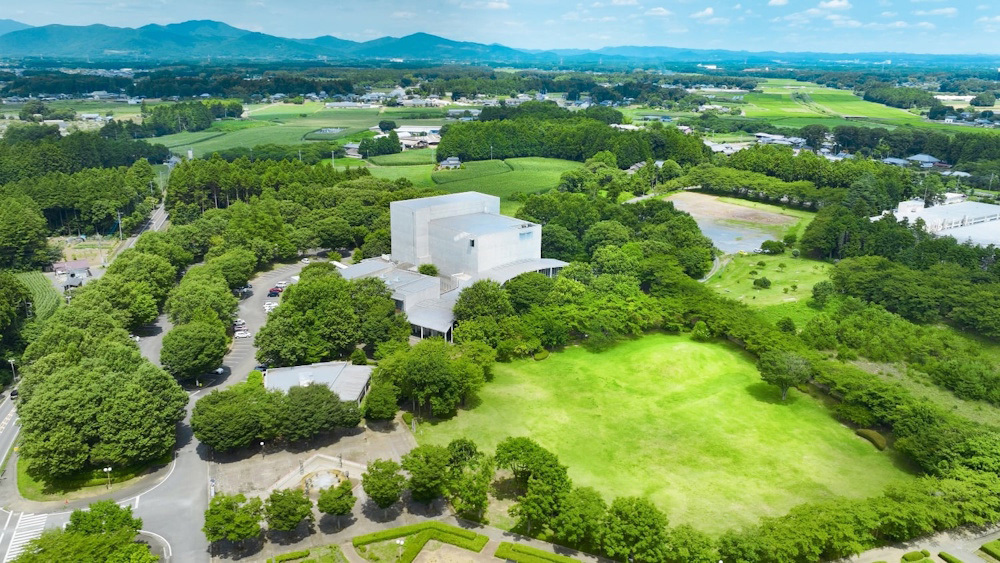
Omitama City Shiki Bunka-kan Minore
Morio: Minore is a truly rare case. It's what you might call a "box-type facility," but traditionally, these kinds of projects were led by professionals and the administration, essentially saying, "Residents, please use this space for your activities." But Minore started from the ground up, with residents discussing, "What kind of facility do we actually want here?"
Kagata: For its time, this approach was quite progressive and apparently became a national pioneer for building facilities this way. Then, using Minore as their stage, the citizen theater troupe "Myu" was born. With a large cast and crew exceeding 100 people, they produce a musical of professional-level quality and perform it once a year.
Myu is also quite a unique troupe. Residents handle everything except directing—actors, planning/scriptwriting, set construction, props, the whole shebang. They only bring in an outside professional for directing, but even so, it's amazing, right? Beyond that, as I'll touch on later, they formed a resident-led group called "Omitama Shigoto" for public relations activities. People gather at Minore as a base for all sorts of activities.
Meeting the "Slightly Unconventional Challengers"
Miyazaki: So, how did we go about finding quirks in Komitama City? Let me explain the method.
First, we visited the actual areas where we wanted to find quirks. We talked to various people, collected distinctive scenery, and gathered lots of postcard-sized "Quirk Source Discovery Cards." To make them understandable to anyone, the basic format is simple: "photo + comment."
Miyazaki: For example, this is a photo of a corn field in Omitama City. Originally, this land was poor soil called "Akanoppo" from the Kanto loam layer. But they improved the soil by introducing cattle to produce compost. They turned Akanoppo into black soil with cow manure, then used the crops grown there as feed to raise more cattle, creating a feed production cycle.
Currently, the self-sufficiency rate for cattle feed is around 10%, but back when the great-grandfather first started developing the Akanoppo, it was as high as 90%. That's because buying feed from outside inevitably becomes expensive. Now, imported feed prices are rising again. If they can increase feed self-sufficiency going forward, it would help reduce costs for dairy farming operations. That's why they were working on soil improvement. So, as one of their unique characteristics, they created this card: "Soil, Cattle, and People Living Together."
This time, the three of us explored quirks and created the card, but when we actually work with residents, we'll ask participants to collect information as "homework."
Morio: So, who should we meet and talk to during the "Habit Exploration"? We believe it's more important to meet people actually doing the work on the ground rather than local power players or decision-makers. After all, the stories from those on the front lines make it easier to see the underlying motivations and context driving the town's policies.
As a tip, instead of saying, "Please introduce us to someone amazing," we say, "Please introduce us to someone who's a bit of a maverick challenger." The key is meeting people who are actually taking action to move the town forward.
Miyazaki: But finding and contacting these "non-conformist challengers" must be quite a challenge, right?
Morio: Exactly. That's why we recommend first reaching out to what you might call "super civil servants" – key local figures who act as community hubs – and asking them to introduce you to these unconventional challengers. This time, through Mr. Kagata's connections, we got recommendations from precisely such individuals deeply familiar with the area.
After meeting the first person and hearing their story, we then ask them to introduce us to "other people doing interesting activities." We go from one person to the next, talking to various individuals. In technical terms, this is called "chain sampling" or "snowball sampling." It's about digging deep into how these people see the town.
Kagata: This time, we were first introduced to the video creators, the Tachihara couple. Next, we spoke with dairy farmer Mr. Tonouchi, Ms. Koike and Ms. Takizawa involved in running Minore, and the former and current leaders of the citizen theater group Myu, , known as "Marilyn and Izumin."
The "power of questioning" is crucial for delving into the unconscious!
Kagata: But before that. We're used to it, but for readers thinking, "After reading this article, I want to try habit exploration," could you tell us how to approach it, Mr. Morio?
Morio: The key to discovering habits is "questioning skills." Personally, I often use a "detailed interview" style of questioning, similar to what's used in qualitative marketing research.

First, I gather basic information by asking about their thoughts on the town. For example:
- "What do you like about this town?"
- "What kind of scenery do you like?"
- "When do you feel glad to live here?"
- "What challenges do you face living in this town?"
etc.
Depending on the individual being interviewed, various responses emerge. From these, I focus on points that catch my attention—things that make me think, " Hmm ?"— and ask for specific reasons behind them. For example, "What specific facts made you feel that way?"
By linking these drawn-out "facts" and "reasons" with basic information like "favorite aspects of the town" or "moments when you feel glad to live here," the town's character begins to emerge. I believe accumulating these insights allows us to arrive at the essence of what makes the town unique.
However, this alone only reveals a bundle of "points about the town and their basis" as perceived by the interviewee. As touched upon in the first and second sessions, the purpose of discovering the "characteristics of the area" is ultimately
"discovering a direction for growth that feels comfortable for the people who live there."
.
Therefore, by identifying "the key points of that town," we can understand
"What kind of joy does it bring?"
"What kind of potential do they see in it?"
and other "feelings associated with that thought." These are what we call "digging deeper" questions.
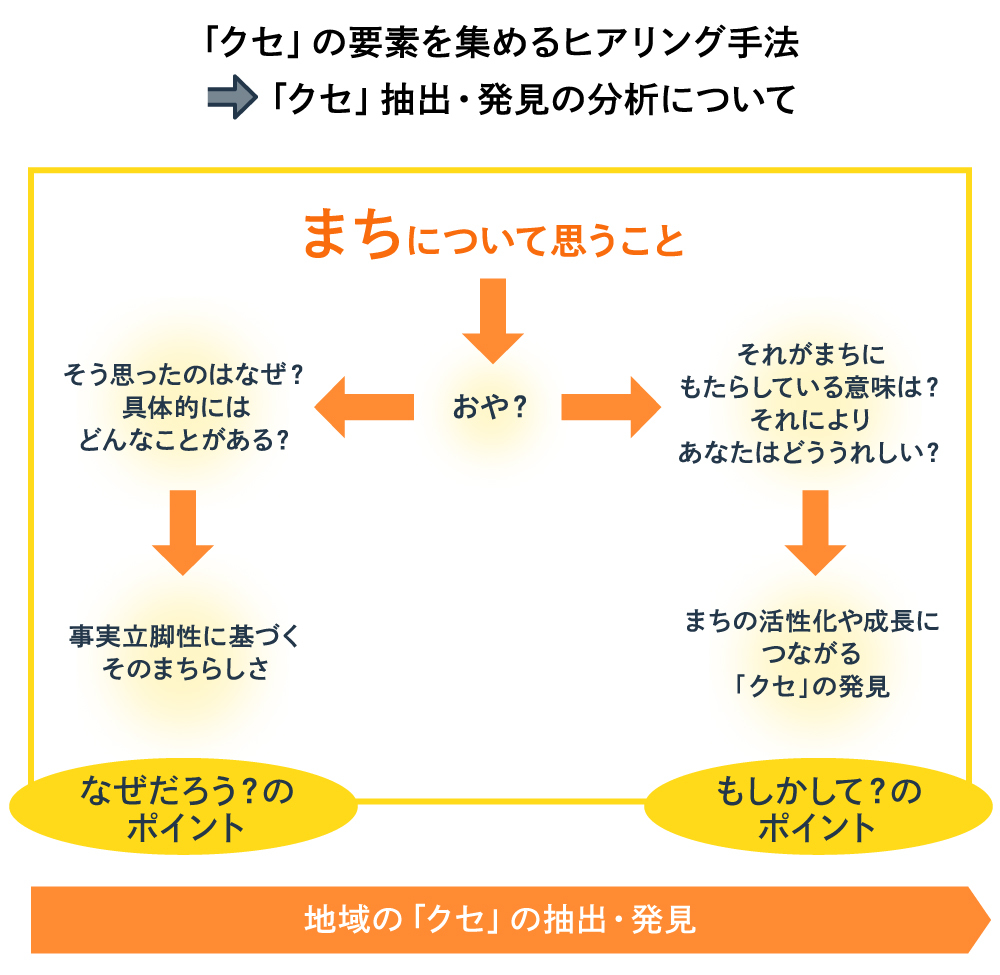 Within the answers we get from this, we might just see the character of growth that person hopes for, the direction they envision for the town's identity. I think this kind of expected growth character is what we call a "habit."
Within the answers we get from this, we might just see the character of growth that person hopes for, the direction they envision for the town's identity. I think this kind of expected growth character is what we call a "habit."
A culture of dialogue and co-creation where everyone pitches in to make things happen
Kagata: Now, let me introduce specifically who we met and what stories we heard. This time, we spoke with four groups of "Out-of-the-Box Challengers."
① The Tachihara Couple
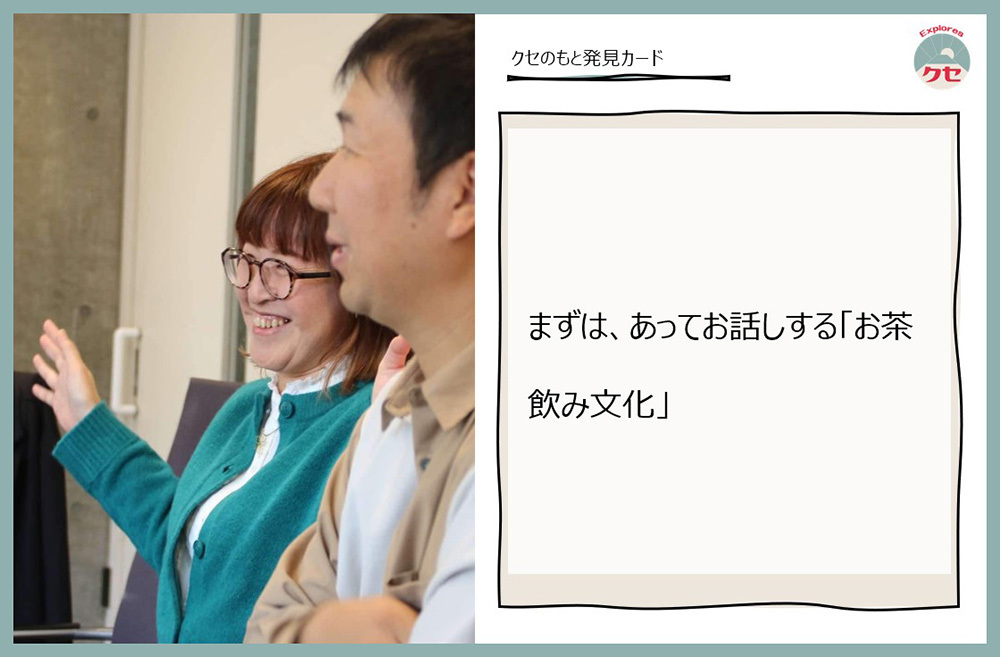
Morio: First up is the Tachihara couple, video creators. They find deep fascination in learning about their region through filmmaking and constantly seem to be on the hunt for quirks. Their "Yogurt Story," a project aimed at improving the image of dairy farming, even won first place in the national public relations contest's video category. They create locally rooted video content while actively working to elevate the livelihood itself.
When I asked them the basic question mentioned earlier about questioning skills – "What's great about this town?" – their immediate response was, "There are people here who can do all sorts of things." I'd expected a more tangible answer, but this highly abstract response made me think, "Hmm?" and sense something deeper.
When I asked why they felt that way, they vividly described the scene of the "OMITAMA Maruichi" market, which incorporates workshops.
Kagata: Half the vendors at this market are creators. It's a unique event that serves as a place to challenge yourself by "trying out running a shop," while also offering an artistic work experience. I see. It's a scene where you can really sense "people who can do all kinds of things," isn't it?
Morio: So, if that represents one aspect of Omita City's character, I wanted to dig deeper. I asked, "How does the presence of 'people who can do many things' make you happy?" The answer was, "It means the town has people open to ideas, creating an atmosphere where those who can make diverse things are drawn here."
Kagata: Back in the pioneering days, this area had nothing, so we had no choice but to build everything ourselves. That culture has continued ever since, right?
Morio: Following that further, I realized that as fertile ground for accepting ideas, there's an atmosphere of "Let's meet first, let's talk first." In traditional communities, newcomers can sometimes feel unwelcome. But because Omitama City was formed by the merger of three municipalities and has a relatively short history as a city, it's easier for a comfortable, non-traditional community to develop. This is how the "tea-drinking culture" and "culture of dialogue" – meeting and talking first – grew. Within this, the words "gather, connect, create" also emerged.
Additionally, the two of them run a citizen group called "Omitama Shigoto" that handles public relations activities. Various challengers gather there, making it another community for encounters.
② The Case of Mr. Tonouchi 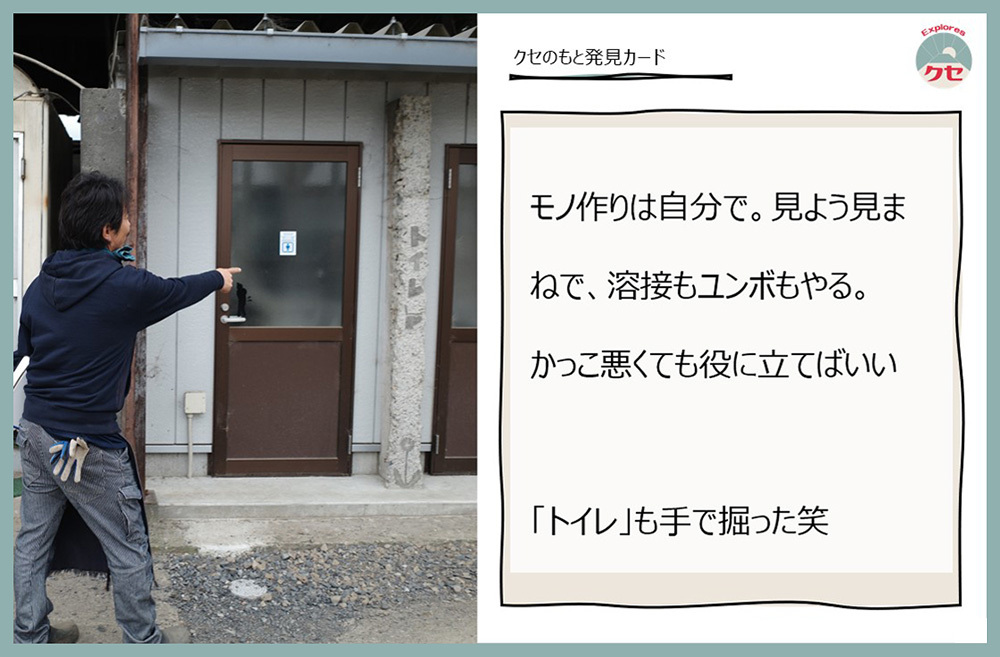
Miyazaki: The second group is Mr. Tonouchi, a dairy farmer. This person simply makes everything himself. He borrowed an excavator to demolish the concrete cow bedding himself, replacing it with comfortable earthen beds. He welded together the gutters connecting the barns. He even built his own toilet.
I actually saw this firsthand. It was fascinating how he'd say, "It doesn't matter if it looks a little rough, as long as it works," and just figure things out by watching others and doing it himself. The ultimate example was when he got certified as an "Intrauterine Insemination Technician."
Morio: Since you mentioned "someone who builds everything himself," I imagined he might just do his own welding, but it was way beyond that level (laughs).
Miyazaki: There's this cutting-edge breeding technique where you grow beef cattle inside dairy cows. Normally, you buy fertilized eggs, but they're incredibly expensive. So, he went to school to get certified so he could transplant fertilized eggs himself. On top of that, Mr. Tonouchi even built his own operating room for it. It sounds like a lot of work, but it was impressive how enthusiastically he talked about it.
③ The Case of Mr. Koike and Mr. Takizawa
Morio: The third group is Mr. Koike and Mr. Takizawa, who are involved in running Minore. They've been involved for many years, both as members of the management committee and as participants in the projects held at Minore.
Morio: Many people from Omitama tend to talk about "highly abstract topics" rather than local products, scenery, or nature. These two were the epitome of that. When I asked, "What do you like most about Omitama City?" their first response was, "No other city values culture as much as this one." They explained that the atmosphere among residents is shaped by a "culture of dialogue."
You think, "There it is again, the culture of dialogue." They shared extensively about how "tea gatherings" serve as a method to cherish this "culture of dialogue," where trust is properly cultivated.
Regarding the "culture of dialogue," Minore values openly considering opposing or minority opinions together without suppressing them, and they seem to call this approach their "culture of dialogue."
Mino~re has developed these rules for starting projects and conducting dialogue, born from years of experience:
■ How to Start a Project
- When starting a project, there must be three core members who will never betray the project no matter what.
- Keep dialogue groups to 6-7 people maximum, with a mix of men and women.
- If the number exceeds this, split into groups.
■Rules for Dialogue and Decision-Making
- Full attendance is the fundamental principle for dialogue sessions.
- First acknowledge others' opinions and consider them
- Decide the resolution method together, and everyone must abide by the decision
These rules, it turns out, aren't just followed in Minore—they're surprisingly widespread throughout Komiyama.
Furthermore, in Omitama, "the ability to create things" is a source of respect. And creating isn't limited to physical objects; it also includes building relationships and systems. This is what creates the "environment for co-creation," a defining characteristic of Minore.
Kagata: It felt like we touched on the essence of Komiyama culture—that "creating connections" and "building systems" are also objects of creation, not just physical things.
④ The Case of Marilyn and Izumin
Miyazaki: The fourth group is Marilyn and Izumin, the former and current directors of the citizen theater troupe Myu. The troupe welcomes participants from first-grade elementary students onward, regardless of whether they live in the city or not. Roles as actors and staff are widely open to citizens, and currently about 100 people participate. The oldest member is 70 years old.
They hold one performance a year. To prepare for it, everyone from children to adults contributes their own ideas and collaborates through dialogue to create a single work together. It was also striking to hear that, since there is no single correct answer in theater, they avoid giving right or wrong answers. Previously, a director had become too rigid, and things didn't go well because it became based solely on that person's standards. After that experience, they decided to "proceed through dialogue without labeling things as right or wrong."
Kagata: It's great that this wasn't the approach from the start, but rather developed over time through discussion and trial and error.
Miyazaki: What I found interesting in your conversation was how adults and children interact on a level playing field. If an adult is always late, a child might say, "That person is always late, so let's just start without them" (laughs). You mentioned it's a place where they learn adult-child relationships while interacting as equals. I felt that having such a community naturally passes on the essence of Omitama to the children.
Another phrase that stuck with me was "one person, one role." It means that everyone has something they're good at, and that becomes their role.
Classifying the Challengers' Statements
Morio: Through interviews like these, we create "Habit Origin Discovery Cards." Simultaneously, we segment the statements and classify them by level using an Excel table.
Kagata: Finally, to create the worksheet, we categorized the collected statements and scenery in Excel under "Nature," "Livelihood," "History," "Unconscious," and "Behavioral Patterns."
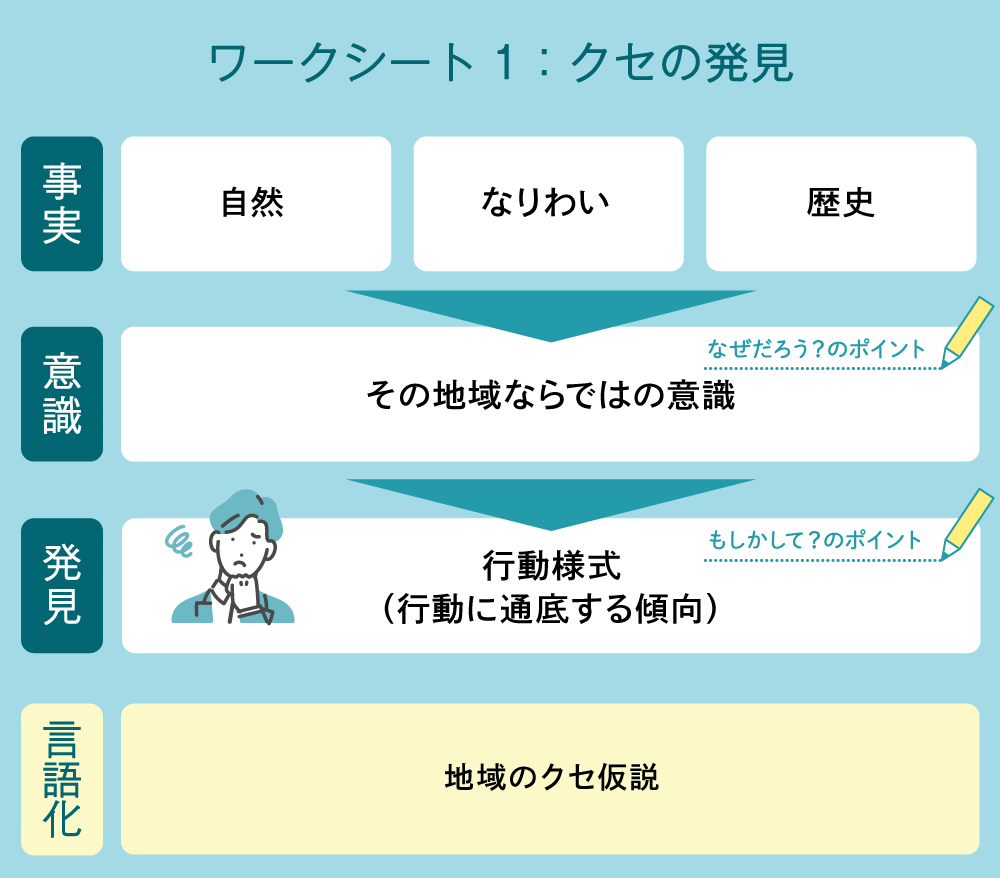
Morio: Note that in habit exploration, we collect not only interviews but also "scenes that caught our attention." We didn't have time to visit this time, but "local supermarkets" and "roadside station direct sales" are also recommended. You might find unexpected selections among the prepared foods made by locals, revealing consumption patterns unique to that area.
Kagata: Beyond what we introduced this time, we also saw dairy farmers installing processing equipment to sell their own milk directly from food trucks. This ability to continuously realize things through their own efforts feels quintessentially Komiyama. Another characteristic is that they do everything themselves, not out of obligation, but because "it looks fun."
Miyazaki: So, after collecting and discussing the "Unique Trait Discovery Cards" this time,
we concluded that the essence of Omitama City's character is
is Komiyama City's defining trait.
Next time, we'll cover the process that led to this conclusion.
We'll present the "Habit Discovery Workshop," where we'll show how we incorporated the collected "habit sources" into a workflow to derive results!
<Summary of This Session>
- Meet the "Out-of-the-Box Challengers" taking action on the ground!
- Questioning skills are key to uncovering quirks!
- Make habit source discovery cards clear by including photos and comments!











 Within the answers we get from this, we might just see the character of growth that person hopes for, the direction they envision for the town's identity.
Within the answers we get from this, we might just see the character of growth that person hopes for, the direction they envision for the town's identity. 

